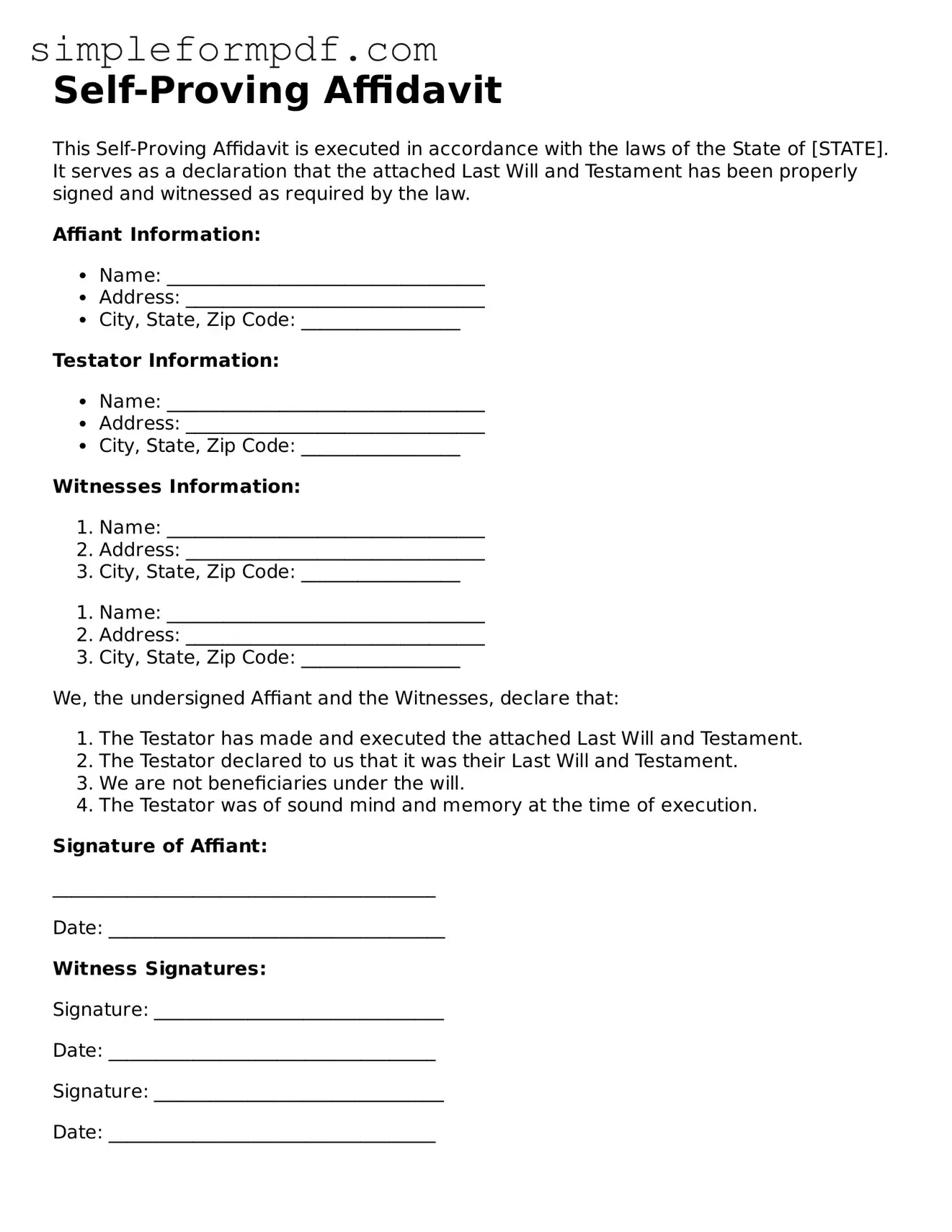Self-Proving Affidavit
This Self-Proving Affidavit is executed in accordance with the laws of the State of [STATE]. It serves as a declaration that the attached Last Will and Testament has been properly signed and witnessed as required by the law.
Affiant Information:
- Name: __________________________________
- Address: ________________________________
- City, State, Zip Code: _________________
Testator Information:
- Name: __________________________________
- Address: ________________________________
- City, State, Zip Code: _________________
Witnesses Information:
- Name: __________________________________
- Address: ________________________________
- City, State, Zip Code: _________________
- Name: __________________________________
- Address: ________________________________
- City, State, Zip Code: _________________
We, the undersigned Affiant and the Witnesses, declare that:
- The Testator has made and executed the attached Last Will and Testament.
- The Testator declared to us that it was their Last Will and Testament.
- We are not beneficiaries under the will.
- The Testator was of sound mind and memory at the time of execution.
Signature of Affiant:
_________________________________________
Date: ____________________________________
Witness Signatures:
Signature: _______________________________
Date: ___________________________________
Signature: _______________________________
Date: ___________________________________
This document must be signed in the presence of the testator and the witnesses. All parties should keep a copy for their records.
